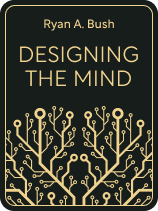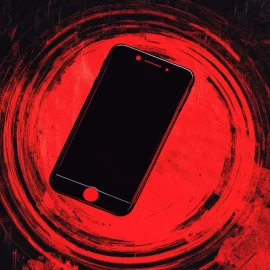

This article is an excerpt from the Shortform book guide to "Designing the Mind" by Designing the Mind and Ryan A Bush. Shortform has the world's best summaries and analyses of books you should be reading.
Like this article? Sign up for a free trial here.
Is your mental programming set in stone? How can you overwrite unhelpful and self-sabotaging mental programs you’ve internalized throughout the course of your life?
You don’t have to accept your default mental processes as your unchanging reality. According to Ryan A. Bush, the author of Designing the Mind, the mind works like a computer, which means that you can overwrite the mental programs that don’t serve you.
Here’s how you can reshape your mind by treating your thought processes like computer algorithms that can be edited.
The Mind as a Computer
Bush argues that the mind is like a computer, with immeasurable inputs and algorithms that prompt the behaviors that make us who we are.
In our minds, inputs are external stimuli—for instance, things we see, hear, or experience—that come from events in our daily lives. These inputs then trigger our “mental algorithms,” or thought patterns, which lead to outputs in the form of our feelings and actions.
Sometimes, our default mental programming doesn’t serve us. They might be linked to biases and faulty assumptions that prompt undesirable emotions and behaviors, leading us to act counterproductively to our values and goals.
Bush asserts, however, that you don’t have to maintain faulty thought patterns forever—since the mind functions like a computer, with the proper knowledge, you can alter your brain’s algorithms like an engineer designing computer software. When you learn to modify your mental algorithms, you can better control the nature of your outputs.
Shortform Example: Change a Faulty Thought Pattern to Change Your Response
Let’s look at an example of a faulty thought pattern that you can change to alter its resultant emotions and behaviors. Say there’s an open position at a company you really want to work for. You apply for the job, but you don’t get it—this is the input. This input then triggers a negative thought pattern: You tell yourself that you weren’t smart enough for the job, and you assume you did poorly in the interview. This thought pattern prompts the undesirable emotional outputs of frustration, anxiety, and embarrassment. Additionally, you respond to the setback unproductively by avoiding future job applications.
Using Bush’s tools (which we’ll discuss further in later sections), you could experience the same thing—not getting hired for a job you want—and change your response by modifying your thought patterns. Instead of assuming that you did something wrong in the application process, you might recognize that you just weren’t the right person for that particular position. Maybe the company already had someone in mind and they were just interviewing outside candidates as a formality.
With these altered thought patterns, you might still feel some disappointment, but you won’t experience the previously intense negative emotions about yourself and your capabilities. Likewise, your experience won’t stop you from applying for other jobs in the future or seeking feedback that could help you improve.

———End of Preview———
Like what you just read? Read the rest of the world's best book summary and analysis of Designing the Mind and Ryan A Bush's "Designing the Mind" at Shortform.
Here's what you'll find in our full Designing the Mind summary:
- How the mind can be reprogrammed like a computer
- Strategies to help you change negative thought patterns, emotions, and behaviors
- How to eliminate your biases to perceive reality more accurately






